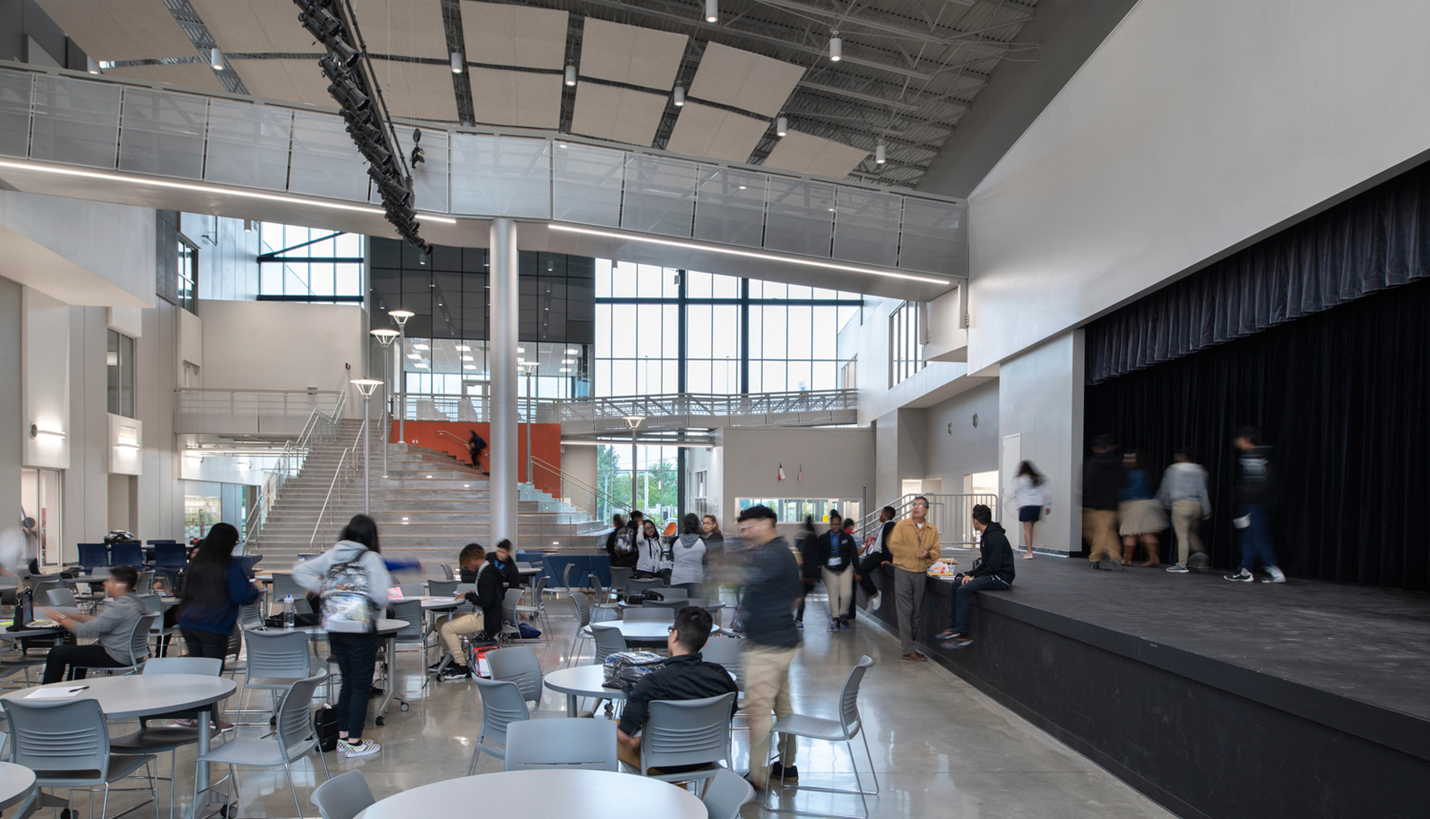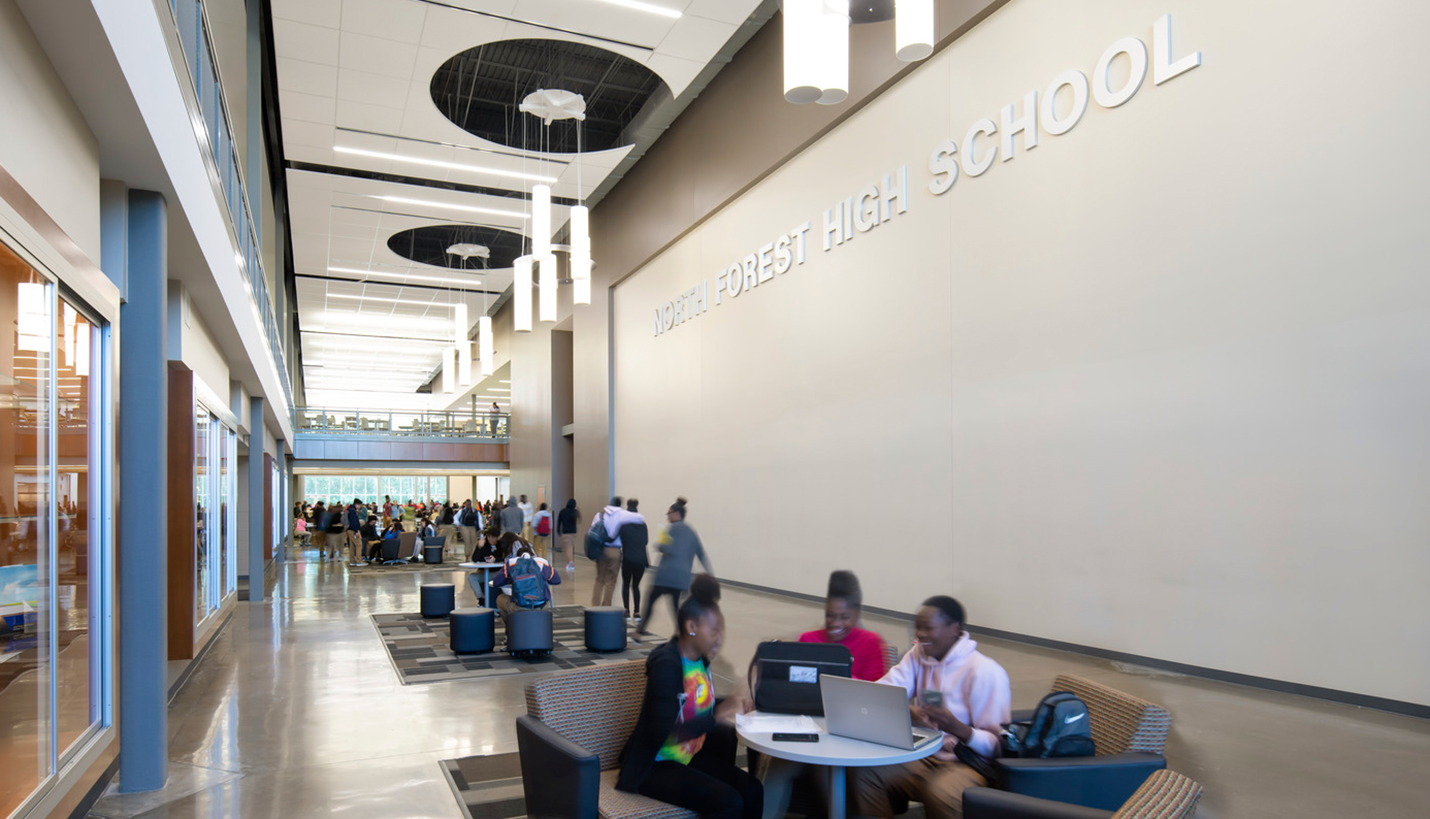




3/3: Design Advocacy for School Safety
During this historical period of unprecedented breaches in school safety, prevention is top-of-mind for parents, students, teachers and community leaders. Page architects Ken Black, Wendy Heger and Chad Johnson offer some collaborative, multi-disciplinary ideas and approaches to this critical issue.
This is both a professional mission to help schools thrive and be safe and a deeply personal commitment for our team members. Chad Johnson in particular notes that as a design architect for K-12 and higher education facilities, his personal conviction to examine school safety and security measures was forever elevated on the morning of May 18, 2018. That day, text messages alerted Chad there had been a shooting at Santa Fe High School, his alma mater. The event left 10 dead and 13 others wounded.
Read more to understand what Ken, Wendy and Chad recommend and why.
Actions Individuals Can Take
- Student Engagement. Students are very aware and concerned about their safety. As a volunteer in the ACE Mentor Program, I have found that students want to be engaged in the process of becoming strong citizens and believe they can be part of school safety solutions. The numerous student achievements I have witnessed make me optimistic the next generation can be part of the solution to many tough problems like this. - Kenneth Black AIA, LEED AP BD+C
- Additional Stakeholder Engagement. A thoughtful engagement process involving architects, contractors, schools and community members can generate design solutions that address multiple needs for the long term: safety, health, and a learning environment for future active citizens. For a long-term solution, we must balance “hardening,” entrance restrictions, and safe hiding places with the need for emergency egress, daylight, views, and engaging, flexible learning environments. - Wendy Heger AIA, LEED AP BD+C
- Advocacy. The districts with whom we work, and their constituents, are focused on school safety as a primary design consideration. Further, the State of Texas has elevated school safety to one of its top five priority issues for this legislative session. I’m advocating for both the Texas Society of Architects and the Texas Chapter of the US Green Building Council this session, and am hearing how elected officials want to play a strong role in promoting safe school environments. - Wendy Heger AIA, LEED AP BD+C
Actions Institutions Can Take
- Examine Industry Best Practices. I am a proponent of Crime Prevention Through Environmental Design (CPTED), which provides proven strategies for safe environments: lines of sight, minimizing hiding places, effective lighting, and community-building. In addition to CPTED, the Association for Learning Environments (A4LE) recently released their School Safety Guide. - Kenneth Black AIA, LEED AP BD+C
- Rethink Campus Designs. The physical environment of a school should support the primary mission of learning in a way that improves safety and security of the school and its community. Strategies can be put into place at three levels of a school: overall site, school buildings and classrooms. Examples include:
- Clear directional and campus wayfinding signage that direct and restrict appropriate visitors to designated drop-off areas, dedicated parking and control speed limits.
- Installation of video cameras and intercoms at primary entrances for granting access into secure vestibules.
- Classroom door locks that allow teachers and students to manually secure the room from the inside during an incident.
- Chad R. Johnson AIA, REFP, LEED AP
Steps Page Has Helped Schools Take
- Implement Clear Lines of Sight. Page and DLR Group collaborated on two Houston ISD high schools, Law and Justice magnet school and North Forest comprehensive neighborhood school. The designs for both schools incorporated optimized lines of sight for enhanced safety. The large North Forest school relies on a central circulation spine to achieve this and Law and Justice benefits from a central commons that incorporates dining, performing, gathering and circulation spaces.
- Establish Safety Zones. Page developed a sophisticated master plan for Austin ISD’s Bowie High School with defined safe zones. Primary and secondary zones can be delineated through the use of traditional elements such as campus fencing.
- Retroactively Implement Safety Measures. In 2018, Cy-Fair ISD, one of the largest school districts in the state of Texas, chose to harden all perimeters of their existing facilities. Page incorporated safety vestibules with bullet-resistant glass and remote visual/audible operations of all doors and passageways exposed to the exterior on several of the schools. Security personnel offices were located adjacent to the vestibules.
03/13/2019
People
Related Posts
- When the User Is Also the Designer
- New Texas School Standards Posted for Public Comment
- Enhancing Page's Strategic and Analytic Teams
- Learning how to engineer college, university HVACs better
- Trends In Student Housing Programming, Design
- Elevating Education Through Design
- Design Excellence








